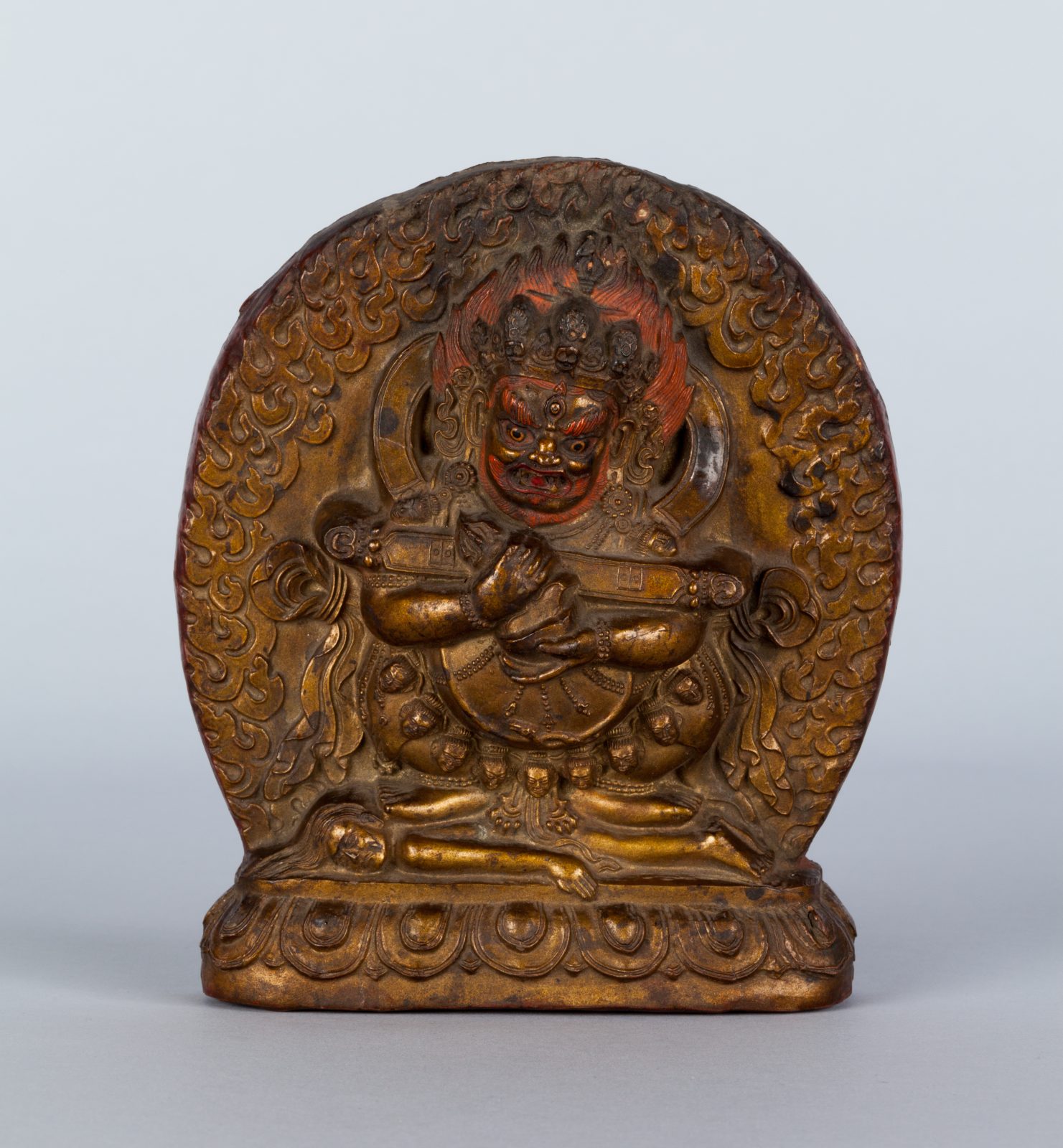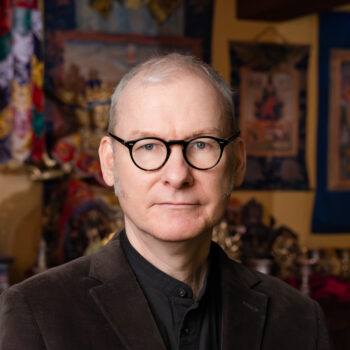


Rubin Museum senior curator Dr. Karl Debreczeny and Dr. Beth Harris of Smarthistory examine a sculpture of Mahakala, one of the eight great wrathful dharma protectors in Vajrayana Buddhism—a remover of obstacles, both internal and external.
The Rubin Museum has teamed up with Smarthistory to bring you an “up-close” look at select objects from the Rubin’s preeminent collection of Himalayan art. Featuring conversations with senior curators and close-looking at art, this video series is an accessible introduction to the art and material culture of the Tibetan, Himalayan, and Inner Asian regions. Learn about the living traditions and art-making practices of the Himalayas from the past to today.
Learn more about Mahakala on Project Himalayan Art, a resource from the Rubin for learning about Himalayan, Tibetan, and Inner Asian art and cultures:
This video was produced in partnership with Smarthistory.

Panjaranatha Mahakala; Tibet; ca. 16th-17th century; Clay; Rubin Museum of Himalayan Art, Gift of Navin Kumar, New York City; C2002.27.3
Leadership support for Project Himalayan Art is provided by the Henry Luce Foundation.
Project Himalayan Art has been made possible in part by a major grant from The National Endowment for the Humanities: Democracy demands wisdom.
This project was made possible in part by the Institute of Museum and Library Services MA-253379-OMS-23.
This project is supported in part by the National Endowment for the Arts.
Lead support is provided by the Ellen Bayard Weedon Foundation, Bob and Lois Baylis, Barbara Bowman, the E. Rhodes & Leona B. Carpenter Foundation, Noah P. Dorsky, Fred Eychaner, Christopher J. Fussner, the Estate of Lisina M. Hoch, Lilly Endowment, Matt and Ann Nimetz, The Randleigh Foundation Trust, Shelley and Donald Rubin, and Jesse Smith and Annice Kenan.
Major support is provided by Daphne Hoch Cunningham and John Cunningham, Stephen and Sharon Davies, the Edward & Elizabeth Gardner Foundation, Mimi Gardner Gates, Hongwei Li, Max Meehan, the Monimos Foundation, Edward O’Neill, The Prospect Hill Foundation, Sarah and Craig Richardson, Rossi & Rossi, Basha Frost Rubin and Scott Grinsell, the Andrew Sabin Family Foundation, Namita and Arun Saraf, Eric and Alexandra Schoenberg, Eileen Caulfield Schwab, UOVO, Sandy Song Yan, and the Zhiguan Museum of Art.
Special support is provided by:
Dr. Bibhakar Sunder Shakya, to honor the memory and legacy of Professor Dina Bangdel, art historian, curator, cultural activist, and educator from Nepal.
Samphe and Tenzin Lhalungpa, to honor the memory and works of L.P. Lhalungpa, Tibetan scholar, broadcaster, and educator.
Any views, findings, conclusions, or recommendations expressed in this initiative do not necessarily represent those of the National Endowment for the Humanities.
The views, findings, conclusions or recommendations expressed in this project do not necessarily represent those of the Institute of Museum and Library Services.

Dr. Beth Harris is cofounder and executive director of Smarthistory. Previously, she was dean of art and history at Khan Academy and director of digital learning at The Museum of Modern Art. Before joining MoMA, Beth was Associate Professor of art history and director of distance learning at the Fashion Institute of Technology where she taught both online and in the classroom. She has co-authored, with Dr. Steven Zucker, numerous articles on the future of education and the future of museums, and is the editor of Famine and Fashion: Needlewomen in the Nineteenth Century (2005). She received her Master’s degree from the Courtauld Institute of Art in London, and her doctorate in Art History from the Graduate Center of the City University of New York.

Karl Debreczeny is senior curator, collections and research, at the Rubin Museum of Himalayan Art. His research focuses on artistic, religious, and political exchanges between the Tibetan and Chinese traditions. His publications include The Black Hat Eccentric: Artistic Visions of the Tenth Karmapa (2012) and the coedited The Tenth Karmapa and Tibet’s Turbulent Seventeenth Century (2016). More →
Get the latest news and stories from the Rubin, plus occasional information on how to support our work.